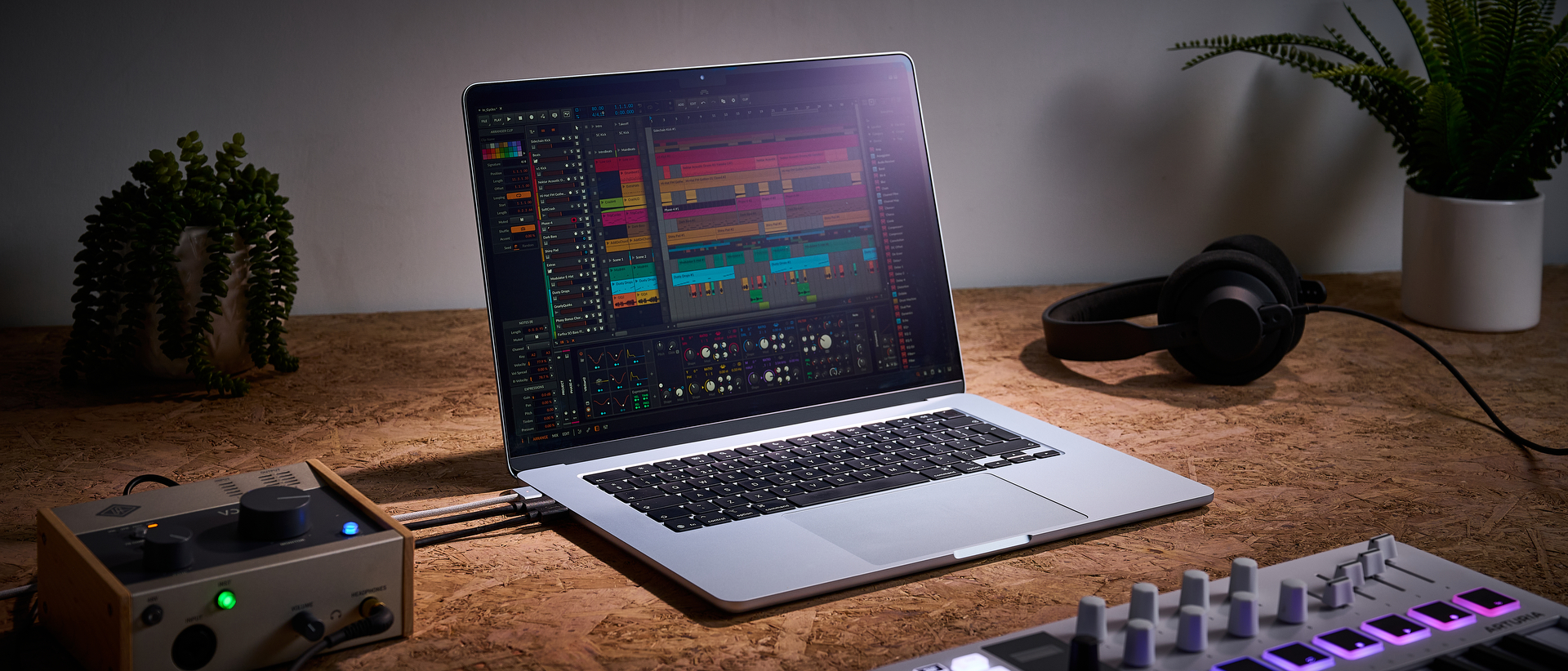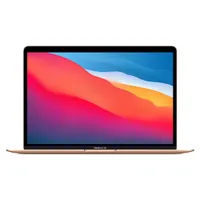MusicRadar Verdict
As far as modern music-making machines go, the Apple MacBook Air M4 is an amazing choice for any kind of musician or producer. It’s got more than enough power to keep you in business for at least the next 10 years, whether you’re crafting EDM in the box with a pair of headphones, or recording a full band with an audio interface and set of monitors.
Pros
- +
M4 processor makes light work of any music-making task.
- +
Lightweight build makes it very transportable.
- +
Aluminium enclosure delivers excellent durability.
- +
Very good battery life for working off-charge.
Cons
- -
Those with lots of peripherals will need to invest in a USB hub.
MusicRadar's got your back
What is it?
It used to be that music-making machines were better left to the realms of desktops, because laptops simply didn’t provide enough horsepower for larger tasks. Thanks to the recent breakthroughs in neural processing chips though, laptops like the Apple MacBook Air M4 make a strong case for not just assisting you to make music on the move, but becoming the centre point of your studio entirely.
Priced at £/$1,399, the MacBook Air M4 15-inch makes a great case for being the most versatile music-making machine on the market right now. Its M4 chip delivers over 38,000,000,000,000 (that’s 38 trillion) operations per second, which means it will make mincemeat of projects with 50+ tracks and CPU-draining plugins. It also has a dedicated Neural Processing Unit (NPU) to assist with AI-specific tasks like stem separation and sample management.
16GB of unified memory might not sound like much if you’re used to needing as much RAM as possible, but the difference here is that unlike traditional builds, there’s no separate memory for the CPU and GPU, which is a big bottleneck when it comes to performance. Here, the RAM is shared between the CPU, NPU, and GPU, which results in a much more efficient and speedy performance, as there’s no duplication of data going back and forth. It also means lower latency because every component has access to the same information.
The MacBook Air M4 boasts up to 18 hours of battery life, which thanks to the efficiency of the combined CPU, GPU, NPU, and unified memory means you’ll be able to run off your charger for a lot longer. It’s lightweight at just 1.51kg too, so easy enough to pack into a backpack to take on the go with you. It includes a 35W dual USB-C port compact power adapter, and a USB-C to MagSafe 3 cable in the box.
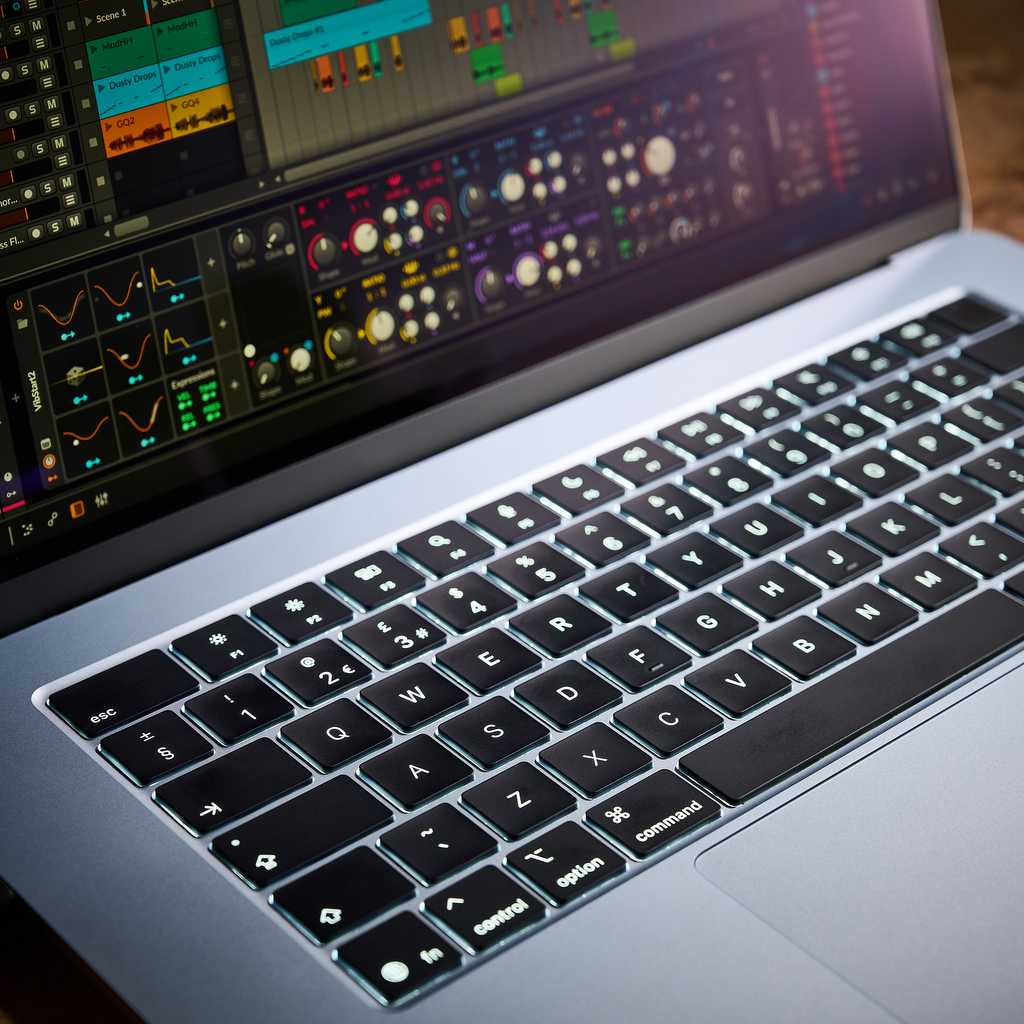
Performance
Unboxing the MacBook Air M4 I’m immediately taken aback by the new Sky Blue finish, which is a bit more Ice Blue to my eye. It’s very close to the traditional silver of a MacBook, but in the right light, the blue tinge looks very evident. Like most MacBooks, the anodised aluminium finish makes it a fingerprint and dirt magnet versus a more traditional plastic laptop.
The last MacBook Air M1 that I tested was a lot different in its design, whereas here the Air is much more like its bigger sibling in the MacBook Pro, offering a rounder and blunter design. As my MacBook Air M1 had a habit of sliding around and feeling quite sharp with its slim aluminium edges, this design change is a welcome addition for me. Despite the slightly broader build it still feels very lightweight, easy to carry around with one hand and barely there when I chucked it into my backpack to take to the studio with me.
The backlit keyboard is the usual comfortable MacBook experience, and the only thing I can see that’s changed from previous iterations is that the mute function key now has a slash through the speaker icon, not that I ever had trouble differentiating them before. It feels wonderful to type on, with a soft feel that’s not as clacky as some keybeds can be. The backlighting also means you can work easily in the often dark, moody light of a studio, with it being bright enough to be easily visible but not so bright that it blinds you.
Want all the hottest music and gear news, reviews, deals, features and more, direct to your inbox? Sign up here.
The Force Touch trackpad feels exactly the same as the one on my MacBook Pro M3, providing a responsive feel that’s really easy to get to grips with. I wouldn’t rely on it for precise editing, and it can be awkward when dragging tracks and WAVs around in the DAW, but these are natural disadvantages rather than anything Mac-specific. The single touch to click and two touches to right-click work spectacularly well, and in all my testing, they never failed to provide me with the correct response.
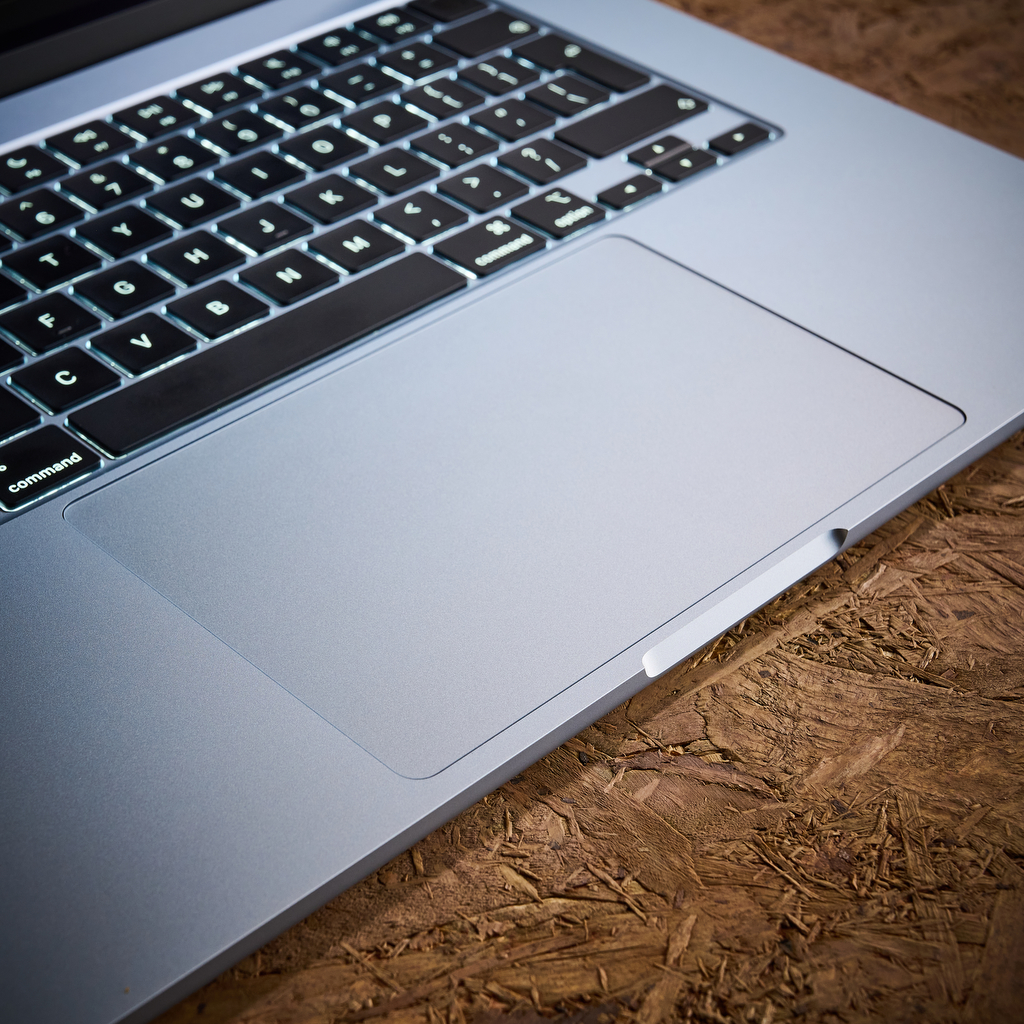
The glossy liquid retina display looks fantastic, even if you’re only looking at the rather dated GUI of Pro Tools. Colours are vivid, lines are crisp and clear, and it’s super bright when you max out the setting. Of course, I’m primarily testing it for music production, but if you are dabbling in video editing or just want to watch the next episode of Alien Earth, it’s very adept for visual media.
There are only two Thunderbolt 4 ports however, which means once you’ve got essentials like your external hard drive and audio interface plugged into it, there’s no more space for MIDI keyboards, charging devices, or any other peripherals you might need. This means that investing in a decent USB hub is a must. It does have a 3.5mm headphone output though, which when combined with the generous processing power means it's entirely possible to mix using the default playback device and a pair of studio headphones.
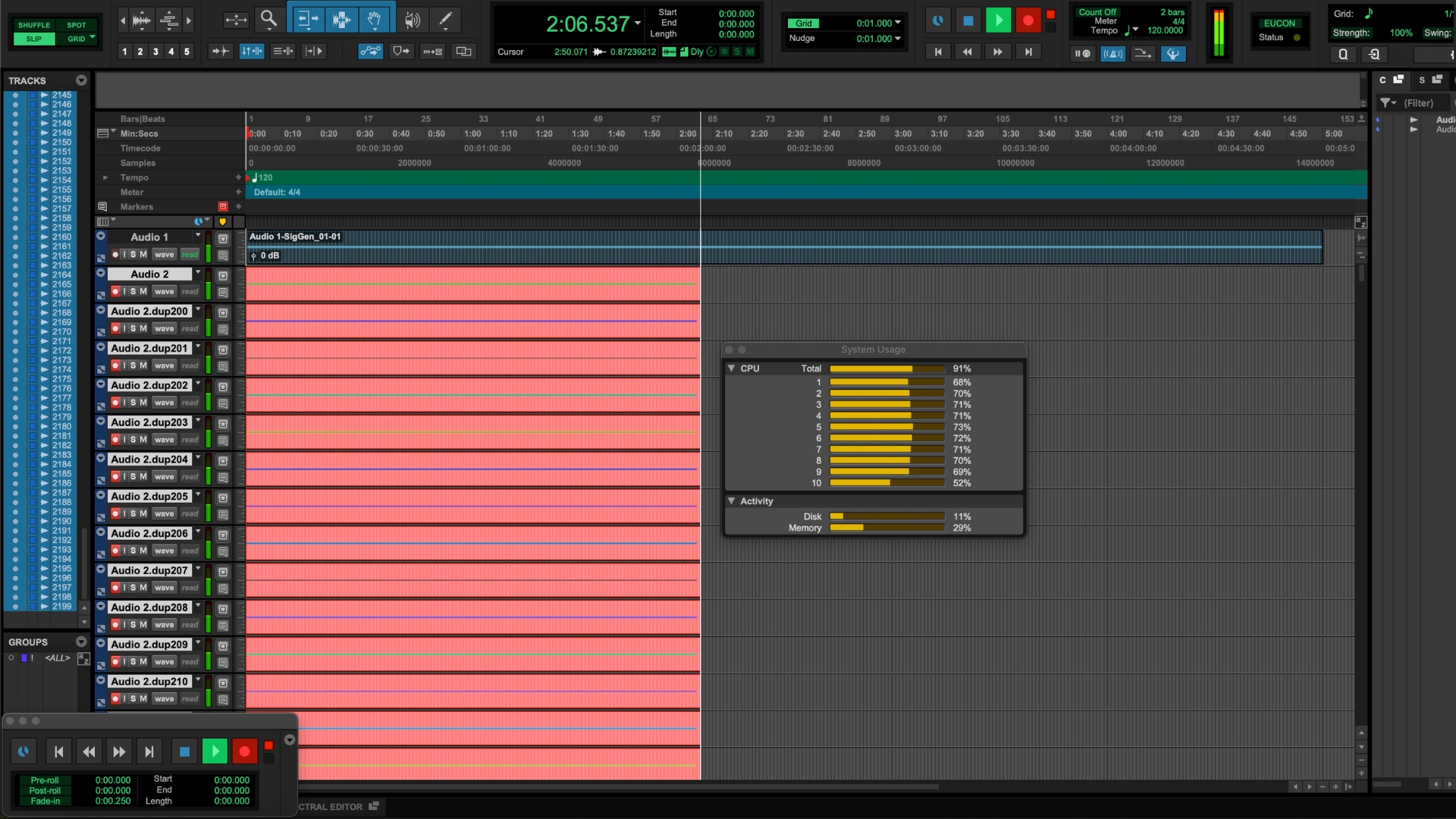
With my DAW of choice Pro Tools installed in rapid fashion, I set about testing the limits of the MacBook’s capabilities by running the tried and tested D-Verb test. I create a session at 48 kHz and 32-bit float, with the buffer size set to 64. I then generate a sine wave over five minutes, before recording it onto 50 tracks, each with 5 instances of D-Verb running on the default preset. As expected, the MacBook ate this test up with just a measly 33% of CPU use.
Next I up the stakes, adding 200 tracks each with 5 instances of D-Verb, which is 1,000 plugins running at the same time. The System Usage window displays a steady 50% all the way through the five-minute track, and monitoring through a pair of headphones I don't hear a single pop or crackle the entire time. Doubling the count, I start to see some signs of strain showing, with 400 tracks resulting in the CPU usage bar bouncing between 83 and 96%.
It was only once I got to 512 tracks, the limit of my Pro Tools Studio license, that I got it to throw an error. While the D-Verb test isn’t wholly representative of how any music-maker would use a PC or laptop, it is a quick and easy way to determine what any machine is capable of, and the result is that MacBook Air M4 is an absolute beast for music production.
Verdict
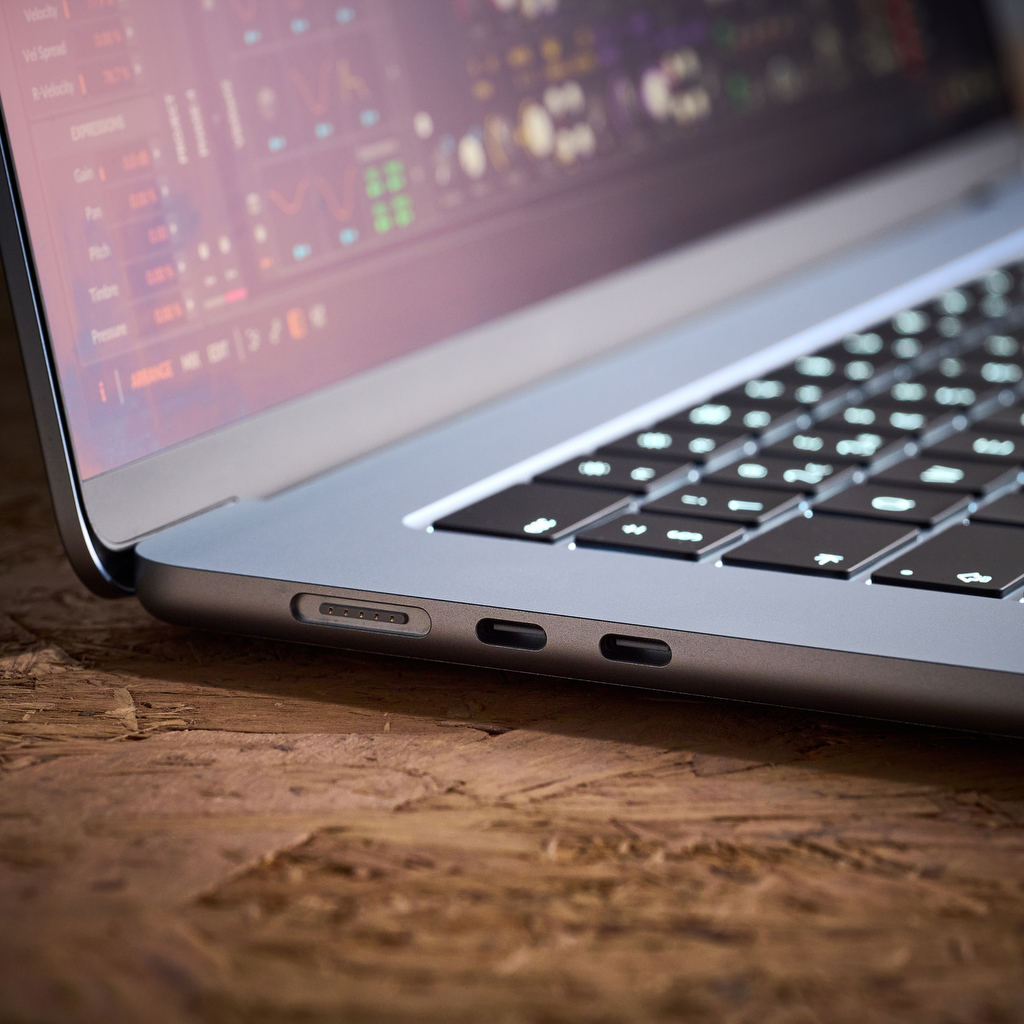
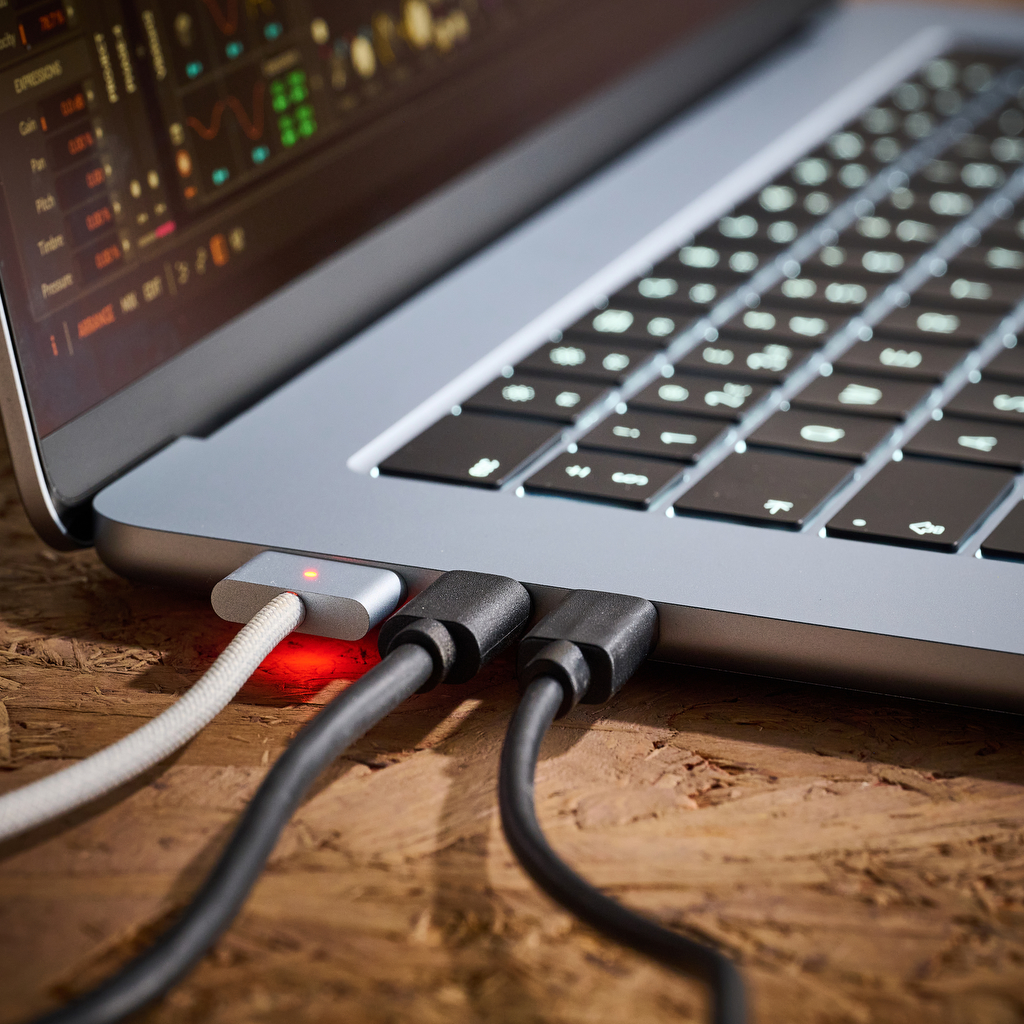
There’s a reason you see Apple machines in studios all across the world, and even prior to the developments in Silicon-based chips, Apple ruled the roost. With this latest wave of M4 chips, an already iron grasp on the music market will no doubt be strengthened. No longer the realm of musicians working exclusively in the box, a modern laptop could now become the centrepiece of a more traditional home studio, allowing you to take your projects and plugins wherever you go.
The MacBook Air M4 isn’t perfect, the lack of connectivity being a particularly big factor if you use a lot of peripherals. With the price of USB hubs being relatively low it’s not a huge barrier to music-making, although if you need additional Thunderbolt connectivity the price could potentially stack up. It’s also still not upgradeable, although an M4 chip will easily last you ten years at the current rate of advancement.
MusicRadar verdict: As far as modern music-making machines go, the Apple MacBook Air M4 is an amazing choice for any kind of musician or producer. It’s got more than enough power to keep you in business for at least the next 10 years, whether you’re crafting EDM in the box with a pair of headphones, or recording a full band with an audio interface and set of monitors.
Hands-on videos
Bjørnar Kibsgaard
Thozi
L.Dre
Alternatives
You can’t buy them direct from Apple anymore, but picking one up elsewhere, or grabbing a refurbished MacBook Air M1 is a great way to get into mobile music-making without spending loads of money.
Probably the closest comparable Windows laptop to the MacBook Air, the Surface Laptop CoPilot+ PC features a SnapDragon X Elite processor with powerful ARM/NPU processing capabilities and a slimline build.
If you want a Windows laptop that isn’t too expensive but still capable for production, then have a look at the Samsung Galaxy Book4 Edge, which features a lovely AMOLED display and plenty of hardware options.
Specs
Launch price | $1,399 | £1,399 | €1,749 |
Key features: | Operating system: macOS Sequoia 15.5 Processor: 10‑core CPU with 4 performance cores and 6 efficiency cores 10‑core GPU Hardware-accelerated ray tracing 16-core Neural Engine 120GB/s memory bandwidth Graphics: M4 GPU Display: Liquid Retina display 15.3-inch (diagonal) LED-backlit display with IPS technology; 2880-by-1864 native resolution at 224 pixels per inch 500 nits brightness Color Support for 1 billion colors Wide color (P3) True Tone technology Memory: 16GB (as reviewed) unified memory - 24 or 32GB options available) Storage: 512GB SSD (as reviewed) - 256GB, 1TB, 2TB options available) I/O: MagSafe 3 charging port 3.5 mm headphone jack 2x Thunderbolt 4 (USB-C) ports Power: Built-in 66.5‑watt‑hour lithium‑polymer battery 35W Dual USB-C Port Compact Power Adapter USB-C to MagSafe 3 Cable |
Dimensions: | 1.15 x 34.04 x 23.76cm (0.45 x 13.4 x 9.35”) |
Weight: | 1.51 kg (3.3 lbs) |
Contact |

Matt is a Junior Deals Writer here at MusicRadar. He regularly tests and reviews music gear with a focus on audio interfaces, studio headphones, studio monitors, and pretty much anything else recording-related. Matt worked in music retail for 5 years at Dawsons Music and Northwest Guitars and has written for various music sites including Guitar World, Guitar Player, Guitar.com, Ultimate Guitar, and Thomann’s t.blog. A regularly gigging guitarist with over 20 years of experience playing live and producing bands, he's also an alumnus of Spirit Studios, where he studied studio engineering and music production.
You must confirm your public display name before commenting
Please logout and then login again, you will then be prompted to enter your display name.
